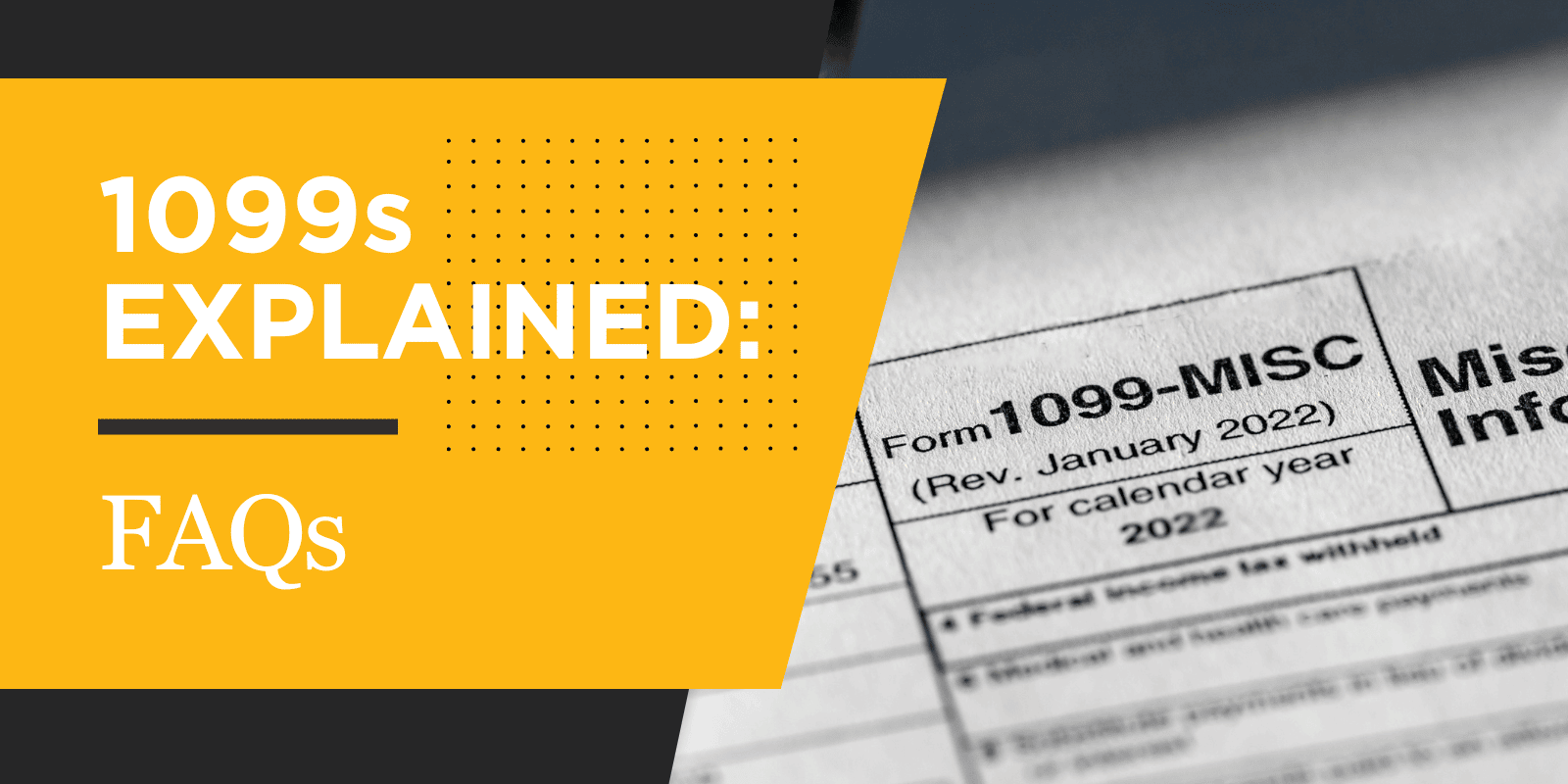
Form 1099 is more common than ever with many taxpayers turning to side hustles for extra income. Now that we have a good understanding of what types of 1099s there are and what they are used for, we can review some of the most frequently asked questions about them. Here are some of the most frequently asked questions about IRS Form 1099.
What if I mistakenly received a 1099?
If you received a 1099 by mistake, or if the amounts reported are incorrect, you should report the error to the payer immediately. If you’re lucky, they’ll be able to correct the error before sending a copy to the IRS. On the other hand, if they already have sent the 1099 to the IRS, you’ll need to request they send a corrected form. Spotting an error quickly will give you the best chance at avoiding further complications. That said, knowing which 1099s to expect in advance, and knowing the expected amount shown on them, can help you catch mistakes early on.
Do I need to report every 1099 I receive?
Every 1099 you receive should be considered in your tax return. This is because the IRS also receives a copy of each of your 1099s as well. For example, you must include all income earned through 1099-NEC, 1099-MISC, 1099-K, 1099-DIV, and others that report income. However, let’s say you receive 1099-S after the sale of your home. Remember, if the property was your primary residence for two of the five years before the sale, then up to $250,000 of the profit is exempt from taxes. This amount increases to $500,000 for married couples filing jointly. In this scenario, the transaction is not reportable. However, you will need to submit a written certification stating why you are exempt from capital gains on the transaction. Be sure to always consult with a knowledgeable tax professional about your reporting requirements.
What’s the difference between a 1099 and a W-2?
A 1099 form reports any income earned outside of regular employer income. It is commonly received by independent contractors, gig workers, and investors. A W-2 reports wages earned through an employer for the year. The biggest difference between the two forms is that the W-2 shows any taxes withheld from your wages, while the 1099 does not. That doesn’t mean you’re off the hook though. If you earn income through 1099s, you should be making estimated tax payments each quarter since the IRS requires taxes to be paid as income is earned. Failing to pay estimated taxes on 1099 income can result in penalties, interest and surprise tax bills.
What changes are coming for the 1099-K?
Previously, taxpayers only received a 1099-K, Payment Card and Third-Party Network Transactions, if they received over $20,000 in aggregate payments over 200 transactions through third-party payment networks, like Venmo or PayPal. For the 2024 tax year, the 1099-K reporting threshold was reduced down to just $5,000 in aggregate payments. Tax year 2025 will see this amount drop to $600. The IRS is expecting many more taxpayers to receive a 1099-K by the January 31st deadline, but with some hiccups along the way. For example, you may mistakenly receive a 1099-K for non-business transactions. Common scenarios may be collecting rent money from a roommate or receiving a friend’s portion of a dinner bill. In this case, it is up to you to contact the filer to request a corrected form.
What if I have more questions about 1099s?
We can’t stress enough just how complex 1099s can be. There are dozens of 1099 types and each with their own set of rules. Therefore, it’s best to consult a tax professional for insight on your own personal tax situation. Optima Tax Relief is the nation’s leading tax resolution firm with over a decade of experience helping taxpayers with tough tax situations.
If You Need Tax Help, Contact Us Today for a Free Consultation